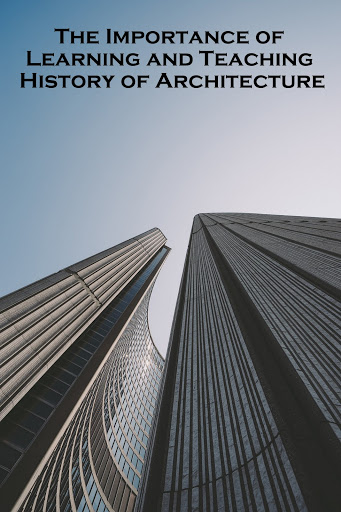The Importance of Learning and Teaching History of Architecture
One of the reasons why we wander as wandering educators is to be able to experience other places and cultures; we long to learn cross-cultural interactions through a tangible experience, and to be able to also share that experience with others. An aspect of culture and heritage that we undoubtedly come across is that of architecture, which I believe reveals much about a location, its people, and culture. Architecture tells us about who we are, where we’ve been, and where we are going. What we build as human beings becomes the legacy we leave behind, offering insights into the socio-political and cultural reality of the time. There is great value in teaching architectural history to young, eager minds in our roles as educators.

What we Learn about Ourselves from Our Architectural Past
Here are a few ways that we have learned of societies, cultural practices, and progress in thinking and human rationality from historic architecture.
Prehistoric architecture of the Paleolithic and Neolithic ages, for example, depicted a movement from wandering to settling. That is, the beginning of dwelling within defined spaces as a community (mostly for protection) that would eventually become cities. Sites such as Stonehenge, too, depict the beginnings of architecture as iconic, as this design is thought to have recorded an important historical event.
Greek architecture displays the emergence of reason and calculated thought. Buildings and cities were designed with precise mathematical calculation, great attention to detail, and were thoughtfully laid out; reflections of the mathematicians, scientists, and philosophers that the buildings housed. Similarly, the way that Roman architecture was designed reflected the civil aspects of that society, putting greater emphasis on designing cities with a core central area, or heart.
Byzantine architecture heralded the strong significance of religion to architecture. In this way, buildings became dedicated spaces of purpose, meaning, and emotional experience. Furthermore, Romanesque monasteries not only reflected the religious consciousness of the time, but also literary and cultural life. This architecture depicted a hunger for knowledge and learning and a development of cultural identity.
The Byzantines also greatly influenced European Medieval architecture, which introduced a stronger demarcation between city and countryside, more deeply embedded class distinctions, and increased mobility for citizens. These aspects in turn laid the groundwork for modern architectural trends.
What Present Architecture says about Our Future
Within a contemporary context, architecture has developed into relational and dynamic. Our current contribution to the landscape through contemporary architecture, with green buildings and smart city designs with mobility optimized layouts is one of efficiency, functionality, and a brighter, more sustainable future for cities and their inhabitants. For concrete examples, Urban Hub is one resource that showcases this sort of progressing city planning and development.
Put simply, it’s designing with people in mind. It’s designing spaces with consideration to the human beings that will inhabit and navigate that space, and how a city itself moves and functions. “We're producing spaces that accommodate human activity,” said Thom Mayne (a world-renowned architect), and “the relationship of that as it enhances that activity.”
Human beings may design buildings, but buildings also shape our human experiences; they shape how we feel about and experience space and our sense of place in it. Architects are therefore “constructing reality,” as Mayne puts it. Of a similar mindset, architect Marc Kushner remarked that “architecture is not about math and it's not about zoning, it's about those visceral, emotional connections that we feel to the places that we occupy,” and that “buildings don't just reflect our society, they shape our society down to the smallest spaces.” Contemporary architects, then, are designing emotional spaces within which we live our lives, shaping our lived realities, and shaping our future through designing better buildings, better cities, and a better world.
-

- Log in to post comments




















